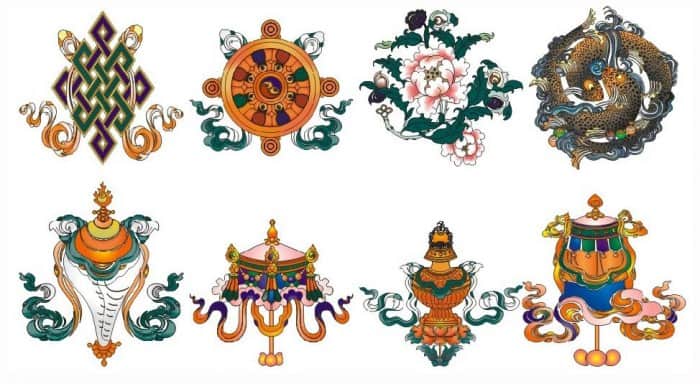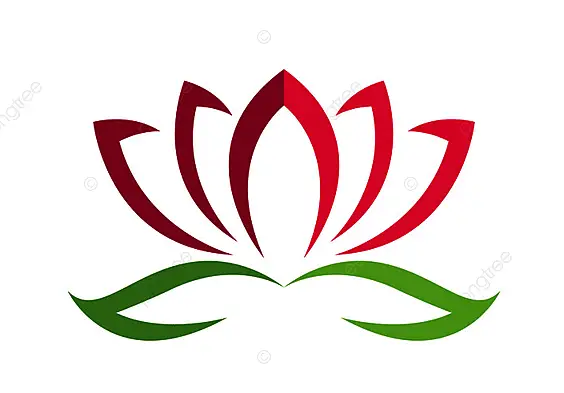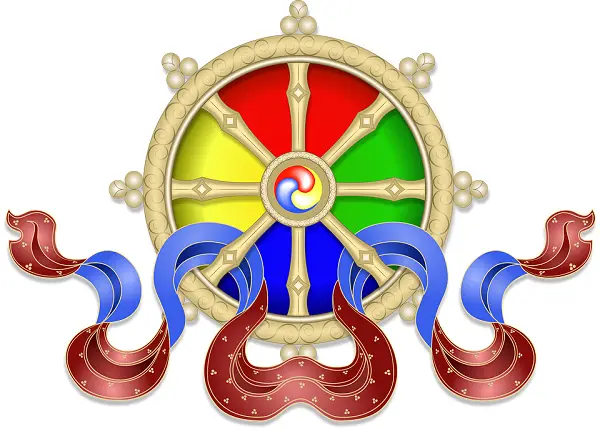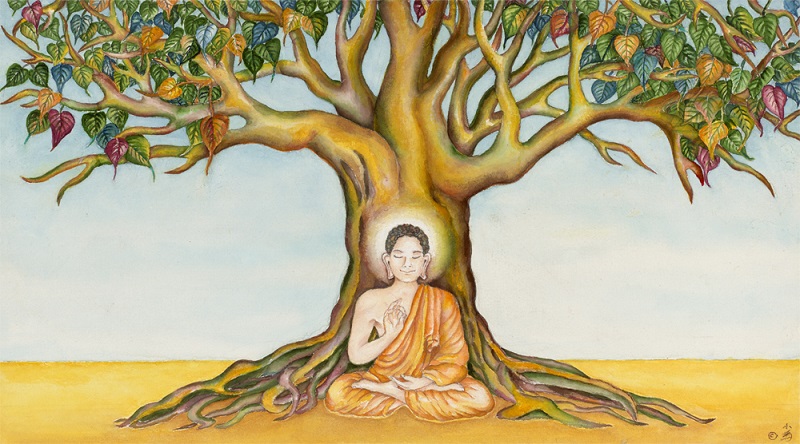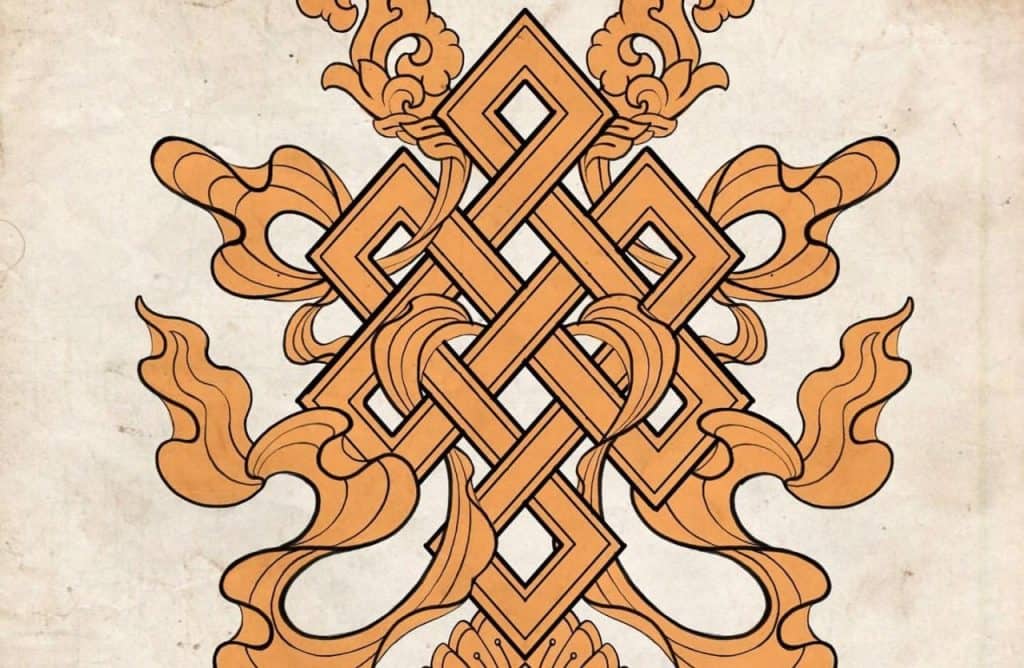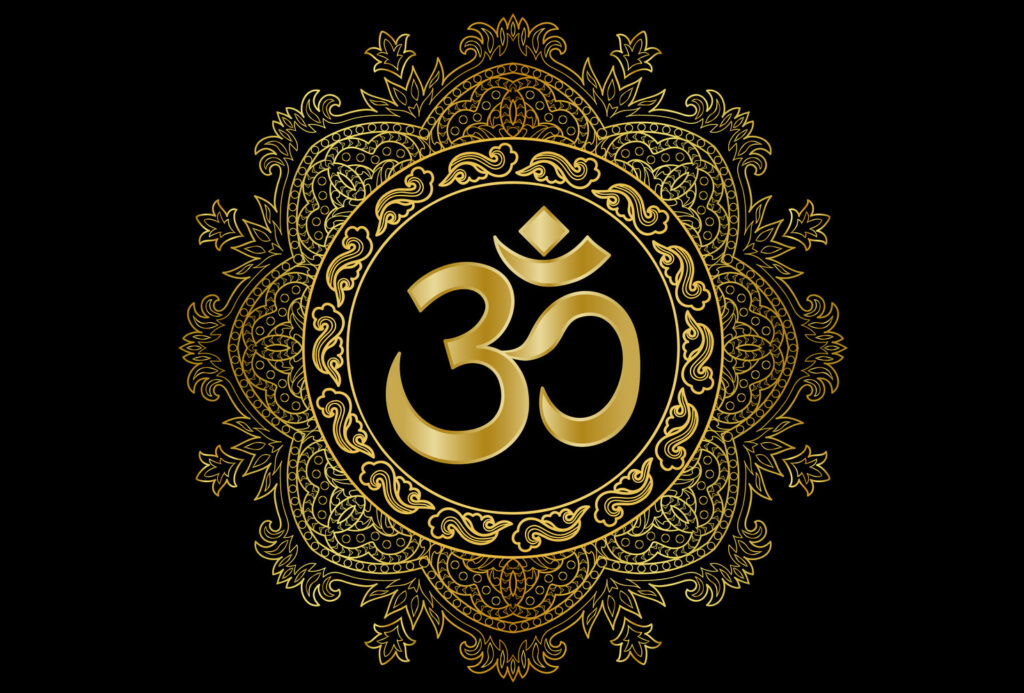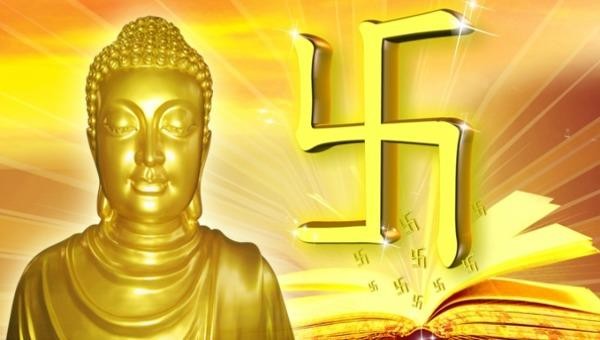In the vast spiritual landscape of Buddhism, symbols play a pivotal role, providing tangible representations of abstract philosophies and intricate teachings. These symbols, steeped in antiquity, serve as guides on the path toward enlightenment, resonating with wisdom and insights that span centuries.
Each Buddhist symbol carries its distinct narrative, reflecting different facets of the Buddha’s teachings. They range from the Lotus Flower, which blossoms in adversity and symbolizes purity and spiritual awakening, to the Dharma Wheel, embodying the Eightfold Path that guides practitioners towards liberation from suffering. Symbols like the Bodhi Tree mark the very site of the Buddha’s enlightenment, while others, like the Endless Knot, reflect the intricate web of cause and effect that permeates existence.
What is a Buddhist symbol?
A Buddhist symbol is a visual icon or representation that embodies specific philosophical tenets, teachings, or concepts within Buddhism. These symbols serve as potent reminders of the fundamental teachings of the Buddha and can be found in a variety of forms, including art, architecture, scriptures and ceremonial objects.
One noteworthy example is the Dharma Wheel. This eight-spoked wheel is a central icon in Buddhism, symbolizing the Noble Eightfold Path – the principal teachings of the Buddha that guide practitioners toward the cessation of suffering. Each spoke represents a different path element: right understanding, right thought, right speech, right action, right livelihood, right effort, right mindfulness, and right concentration. The cyclical nature of the wheel signifies the endless cycle of birth, death, and rebirth, from which Buddhists aim to liberate themselves through enlightenment.
Buddhist symbols, such as the Dharma Wheel, are not merely artistic elements; they provide an integral connection to the religion’s profound teachings and philosophical insights. These symbols offer a tangible means for practitioners to reflect upon and incorporate the principles of Buddhism into their daily lives.
1. Lotus Flower symbol
In Buddhism, the Lotus Flower is a significant symbol that carries a rich, multifaceted meaning, metaphorically exemplifying profound spiritual concepts. Often depicted in white or pink, it primarily symbolizes spiritual awakening, purity and the potential for growth.
The growth journey of the lotus, from muddy waters to a blossoming flower basking in sunlight, mirrors the spiritual path taken by individuals in Buddhism. Just as the lotus flower rises from the murk untainted, so can individuals rise above the defilements and suffering of the physical world to achieve spiritual enlightenment. This image serves as an affirmation of the possibility for transformation and transcendence, even amid adversity.
Moreover, the lotus’s cleanliness amidst the mud is representative of maintaining purity of mind. Buddhists strive to nurture a mind free from attachment, aversion, and ignorance, the three poisons that fuel the cycle of suffering in Buddhist philosophy.
The lotus flower also bears links to specific deities or figures within Buddhism. For instance, the Bodhisattva of Compassion, Avalokiteshvara, and the Buddha himself are often depicted sitting on a lotus throne, reinforcing their enlightened state.
Thus, the Lotus Flower, with its intricate symbolism, embodies the essence of Buddhist teachings, providing a visual reminder of the spiritual journey and the potential for enlightenment that lies within every individual.
2. Dharma Wheel symbol
The Dharma Wheel, or Dharmachakra in Sanskrit, is one of the most profound and universally recognized symbols in Buddhism. Deriving its origins from ancient Indian solar and lunar symbology, the Dharma Wheel has become emblematic of the Buddhist teachings, or Dharma, as well as the journey towards enlightenment.
In its most common depiction, the Dharmachakra is a wheel with eight spokes, each representing one aspect of the Noble Eightfold Path: right understanding, right thought, right speech, right action, right livelihood, right effort, right mindfulness, and right concentration. The Noble Eightfold Path is the Buddha’s prescription for ending suffering (Dukkha) and achieving enlightenment.
The circular shape of the Dharma Wheel embodies the cyclical nature of existence, consistent with the Buddhist concepts of reincarnation and rebirth. It symbolizes the endless cycle of birth, death, and rebirth (Samsara), and the potential for individuals to break free from this cycle through the practice of the Dharma.
The hub of the wheel represents moral discipline, which supports and stabilizes the practitioner’s efforts, just as the hub stabilizes the wheel. The rim of the wheel signifies mindfulness, which holds the entire path together, analogous to the rim holding the spokes.
In some representations, the Dharma Wheel may include a smaller wheel within its hub, embodying the three jewels of Buddhism: the Buddha (the enlightened one), the Dharma (the teachings), and the Sangha (the community of practitioners).
Therefore, the Dharma Wheel is more than a mere symbol; it is a complex allegory of Buddhist philosophy and the spiritual journey towards enlightenment. It reinforces the path of righteousness and ethical conduct that a practitioner must follow to escape the cycle of Samsara and attain Nirvana, the ultimate liberation.
3. Bodhi Tree symbol
The Bodhi Tree, in Buddhist symbolism, holds immense significance as it directly relates to the life and enlightenment of Shakyamuni Buddha, the founder of Buddhism. The term “Bodhi” in Sanskrit translates to “awakening” or “enlightenment,” cementing the tree’s status as a symbol of spiritual awakening and the human potential to attain true insight.
The historical Buddha, Siddhartha Gautama, attained enlightenment (Bodhi) while meditating under a Bodhi tree in the region now known as Bodh Gaya in India. This specific tree, a species of fig known as Ficus religiosa or the sacred fig, is thus venerated in Buddhist tradition. This event is considered one of the most significant moments in Buddhist history, marking the transition of Siddhartha Gautama from a seeker to the Buddha, the enlightened one.
In a broader philosophical context, the Bodhi Tree represents the very place where Buddha conquered the mind and transcended the confines of worldly existence. The act of sitting under the Bodhi Tree signifies the unwavering determination and discipline needed to achieve spiritual awakening. It serves as a reminder of the Buddha’s journey and symbolizes the ultimate potential within all beings to attain enlightenment.
Often, in Buddhist iconography, the Buddha is depicted seated under the Bodhi Tree, emphasizing the crucial role of meditation in the path to enlightenment. The leaf of the Bodhi Tree has also become an emblem of Buddhism, symbolizing peace, prosperity, and the Buddha’s teachings, also known as Dharma.
4. Endless Knot symbol
The Endless Knot, or Shrivatsa in Sanskrit, is an intricate and complex symbol found in Buddhism, forming part of the group known as the “Eight Auspicious Symbols.” The design is composed of a series of right-angled, intertwined lines with no apparent beginning or end, making it a closed, geometric diagram.
The Endless Knot symbolizes the interrelation of all phenomena, the intertwining of wisdom and compassion, and the cyclical nature of existence. It denotes the interconnectedness of all things in the universe, mirroring the core Buddhist concept of dependent origination—that all phenomena arise in dependence upon multiple causes and conditions.
The interconnected, intertwined design illustrates the endless cycle of birth, death, and rebirth, and the possibility of breaking free from this cycle to achieve enlightenment. The Endless Knot is a reminder that all components of existence are interwoven and that time is cyclical—every end is but a new beginning.
Further, the Endless Knot represents the union of wisdom and method, or the combination of wisdom (insight into the ultimate nature of reality) and compassion (the desire to alleviate the suffering of others), two fundamental aspects of the path to enlightenment in Buddhism.
The Endless Knot can also represent the Buddha’s endless wisdom and infinite compassion, qualities central to Buddhist philosophy and practice. It is often used as a charm to bring longevity, prosperity, and harmonious connection in life.
6. Conch Shell symbol
The Conch Shell, or Sankha in Sanskrit, is one of the Eight Auspicious Symbols in Buddhism, known collectively as Ashtamangala. Its origin traces back to ancient Indian traditions where it was a symbol of authority and power, often used as a trumpet in battle and ceremonies.
In Buddhism, the Conch Shell, particularly when depicted with spirals moving clockwise, represents the profound and far-reaching voice of the Buddha and his teachings, known as the Dharma. The sound of the Conch Shell is believed to banish evil spirits, avert natural disasters, and scare away poisonous creatures. It is therefore often used in ritual practices, its resonant sound serving as a call to awaken from ignorance and to strive for enlightenment.
The spiral design of the Conch Shell, moving in a clockwise direction, symbolizes the dissemination of the Buddha’s teachings in all directions, across all realms. It signifies the expansive and inclusive nature of Buddhism, reminding practitioners that the teachings of the Buddha are universal, transcending borders and cultures.
Furthermore, the Conch Shell is associated with truthful speech and strength. It underscores the significance of communication in the spiritual journey and the importance of using speech in a beneficial, compassionate, and truthful manner.
7. Tibetan Prayer Flags symbol
Tibetan Prayer Flags, a ubiquitous symbol in Tibetan Buddhism, are colorful rectangular cloths often found strung along mountain ridges, temples, and sacred landmarks in the Himalayan region. These flags, traditionally printed with mantras, prayers, and auspicious symbols, serve as a potent symbol of peace, compassion, strength and wisdom.
Each flag is usually dyed a specific color, each corresponding to one of the five elements: blue for the sky, white for the wind, red for fire, green for water, and yellow for earth. This color coding is significant in Tibetan Buddhist cosmology, signifying the harmony of the elements and the interconnectedness of the physical and spiritual realms.
On each flag, there are various images and texts, including mantras, prayers, and powerful symbols such as the wind horse (a mythical Tibetan creature that symbolizes the speed of the mind and the ability to “ride” on prayers), the eight auspicious symbols of Buddhism, and deities. These depictions serve as a reminder of the teachings of Buddhism and the practitioner’s commitment to the path of enlightenment.
The flags are typically hung outside, where the wind can pass over them. This practice is based on the belief that the wind will carry the blessings and prayers inscribed on the flags to all beings in the world, spreading goodwill, compassion, and harmony. As the images and mantras fade with time due to the elements, it symbolizes the Buddhist teachings on impermanence and the cycle of samsara.
8. Om symbol
The symbol of Om, or Aum, holds a significant place in many Eastern religions, including Buddhism, Hinduism, and Jainism. Its origins lie primarily in Hindu scriptures, but it has been incorporated into Buddhist practices, especially in regions where Buddhism and Hinduism have coexisted and influenced each other, such as Nepal, Tibet, and India.
In Buddhism, Om is considered a sacred syllable often used in mantras, chants and meditation. While it does not carry the same extensive philosophical connotations as in Hinduism, it is regarded as a representation of the true reality of the universe and the essence of enlightenment.
The Om symbol itself consists of three curves, one semicircle, and a dot. The large bottom curve symbolizes the waking state of mind, the everyday conscious awareness. The middle curve, which is twisted out from the base, signifies the dream state, representing the subconscious mind. The upper curve stands for the state of deep sleep, or unconsciousness, indicative of an area where conscious desires and fears are absent. The dot represents the absolute state of peace and bliss, which is the ultimate aim of spiritual pursuit. The semicircle separates the dot from the curves and bars the conscious mind from reaching the ultimate state, symbolizing the power of illusion or Maya.
Used frequently in Tantric Buddhism, the chant of “Om” is said to resonate with the natural vibration of the universe, helping to induce a state of calm, mindfulness, and inner peace in the practitioner, harmonizing the physical and spiritual aspects of the individual. It is often the opening and closing sound in many mantras, including the famous mantra “Om Mani Padme Hum“, further emphasizing the interconnectedness of all beings and the universe.
Therefore, while the Om symbol in Buddhism does not embody the religion’s core doctrines, it is a crucial component of many Buddhist practices. It signifies a profound concept of universal unity, the cyclical nature of life, and the pathway to enlightenment. It is considered a powerful tool for meditation, serving as a bridge between the practitioner’s mind and the vast expanse of the cosmos.
9. Swastika symbol
The Swastika, a symbol that holds a wide array of meanings across different cultures, is a significant emblem in Buddhism, having been incorporated into Buddhist iconography since the religion’s inception. Notably, its meaning and usage within Buddhism differ vastly from its appropriation by Nazi Germany, a more recent and unfortunate chapter in the symbol’s history.
In Buddhism, the Swastika is a symbol of good fortune, prosperity, and abundance. Its origins in Buddhist symbology trace back to ancient India, where it was a sign of auspiciousness and well-being. The term “Swastika” is derived from the Sanskrit “svastika,” which translates as “that which is associated with well-being” or “auspicious.”
The Swastika is often depicted in two forms in Buddhist iconography: clockwise (卐) and counterclockwise (卍). The clockwise Swastika, typically representative of the sun, light, and active energy, is commonly associated with the Buddha’s footprint and heart. Meanwhile, the counterclockwise Swastika often symbolizes the moon, darkness, and mystical energy.
In the context of Buddhist teachings, the Swastika signifies the Buddha’s feet or the Buddha’s heart, depending on its orientation. It represents the eternal cycling of life, death, and rebirth, reflecting the Buddhist understanding of Samsara—the cycle of existence.
Additionally, the Swastika’s four arms, pointing in four directions, can be seen to symbolize the spread of the Dharma—the teachings of the Buddha—across all corners of the world. They may also signify the four Noble Truths, a foundational concept in Buddhism that discusses the reality of suffering and the path to its cessation.
Thus, in Buddhism, the Swastika is a symbol of auspiciousness, eternal cycling, the Buddha’s teachings, and the dissemination of Dharma. We have to distinguish its usage and meaning in this context from its more recent associations with hate, racism, and genocide due to its appropriation by the Nazi regime.
10. Stupa symbol
A stupa is a significant architectural symbol and a place of veneration that serves multiple purposes, often associated with the commemoration of the Buddha or other significant figures and events within Buddhism. Deriving its name from the Sanskrit term “stūpa,” which translates to “heap” or “mound,” the stupa embodies numerous philosophical and religious concepts.
Originally, stupas were built to house the remains of the Buddha after his death, known as “relics,” making them sites of pilgrimage for devotees. Over time, the construction of stupas expanded to commemorate events of the Buddha’s life or to contain relics of other significant figures.
Architecturally, a stupa is composed of several key elements, each symbolizing different aspects of the Buddhist path to enlightenment. The square foundation represents earth, the dome or “anda” symbolizes water, the spire (or conical tower) corresponds to fire, and the topmost point or umbrella represents air. The fifth element, space or the universe, is embodied by the whole structure.
These elements also correspond to the Five Skandhas, which in Buddhist philosophy, constitute the “aggregate” components of a sentient being: form, sensation, perception, mental formations and consciousness.
Stupas, by their design, are also a symbolic representation of the Buddha’s enlightened mind. The base signifies his crossed legs in meditation, the dome represents his torso, the spire symbolizes the crown of his head, and the topmost point stands for the flame of his enlightenment.
Beyond these, the stupa represents the universe itself, embodying the Buddha’s teachings about the structure of the cosmos and the path to enlightenment. Pilgrims visiting a stupa would circumambulate it in a clockwise direction, mimicking the path of the sun, a gesture that symbolizes the turning of the Dharma wheel.


